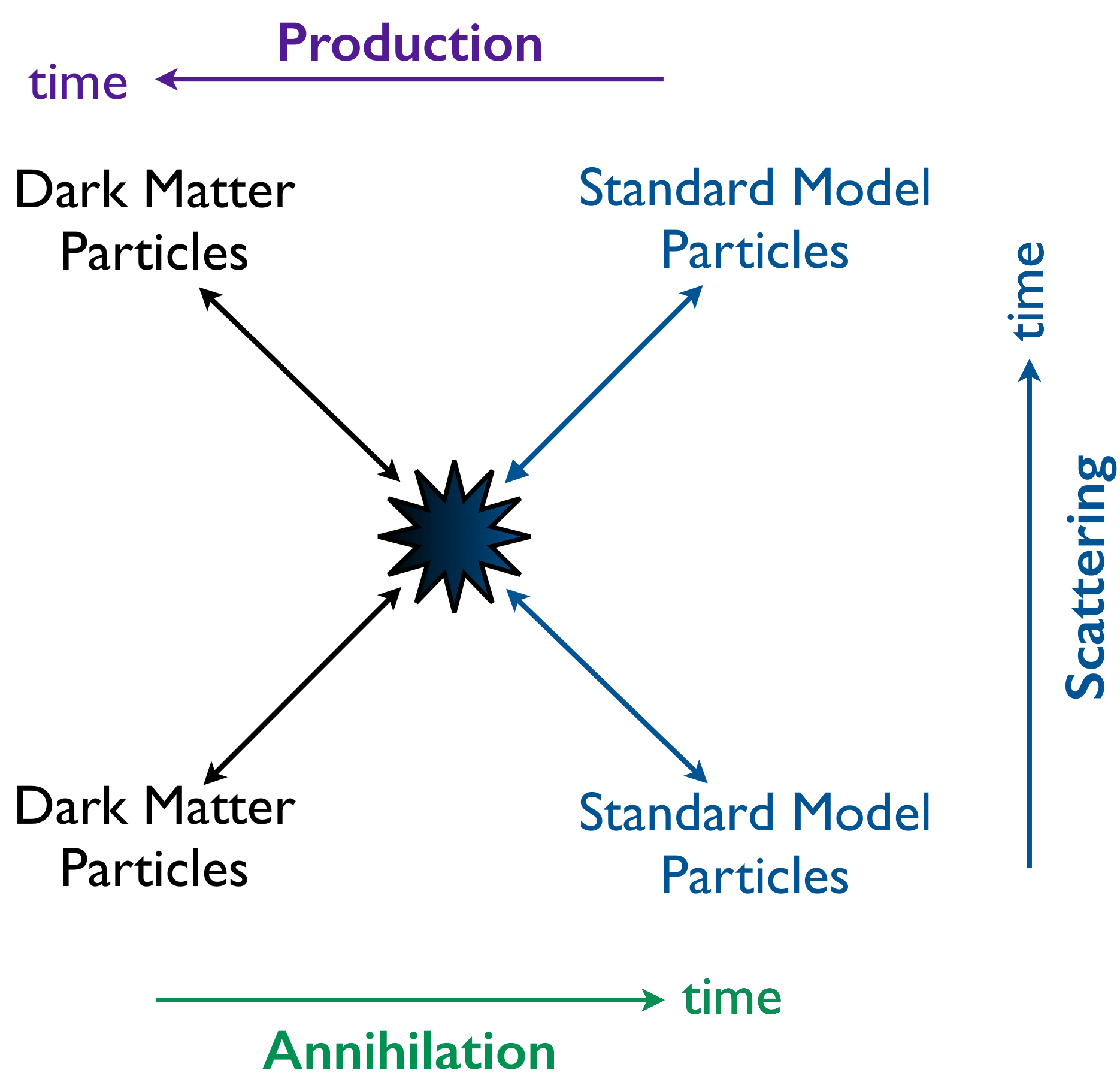Dark Matter
What is Dark Matter?
The concept of dark matter arose as a solution to a problem that has been puzzling astronomers for decades. Galaxies, when observed, rotate at a much faster rate than is expected for the estimated mass they contain. Astronomers and physicists have suggested that the extra mass may be accounted for by dim objects that our instruments cannot detect, or that the laws of gravitation are different over large distances. The most convincing argument, however, is that a previously unknown type of matter—dark matter—is clumped throughout the universe. We did not know about dark matter before now because it rarely interacts with regular (what physicists call baryonic) matter or with light other than through gravitation.
So what’s it made of?
Because of its relatively inert nature, the physical makeup of dark matter remains a mystery. Perhaps the most likely candidate is the Weakly Interacting Massive Particles (WIMP), though axions and more exotic candidates exist. Our research is designed to detect the former of these possibilities. Right now, the most probable candidate for a dark matter WIMP is a particle called the neutralino. The neutralino is one of the particles whose existence is predicted by the theory of supersymmetry, which attempts to unite the four natural forces under a single theory.
How do you detect it, if you don’t know exactly what it’s made of?
There are actually multiple attempts at detecting dark matter, each of which try a different method, and which all complement each other. There are three primary methods for detection: direct, indirect, and production.

A diagram showing possible dark matter detection methods.
Annihilation (Indirect Detection)
In indirect detection, dark matter itself is not detected, but rather, Standard Model particles produced when dark matter particles annihilate with their anti-particles. The Fermi telescope is one detector which searches for anomalous gamma ray signals that are expected to come from dark matter annihilation.
Scattering (Direct Detection)
In direct detection, dark matter particles scatter off Standard Model particles, producing a signal that can be detected with modern instruments. Our group is part of the LZ collaboration, which is a direct detection experiment. We look for dark matter particles scattering off xenon atoms, which scintillate (produce light) when struck by other particles.
Production
In production experiments, Standard Model particles are slammed together at extremely high energies. The resulting explosion of particles may produce dark matter particles, in addition to huge showers of Standard Model particles. The Large Hadron Collider has is performing this type of dark matter search, among its many other particle physics tasks.
How much of this stuff are we talking about?
According to the most recent studies, the universe is 5% baryonic matter, 27% dark matter, and 68% dark energy. Baryonic matter consists of the atoms of which you and everything you interact with is made. This includes stars, galaxies, planets, and just about everything else astronomers can visually observe. Actually, less than one percent of the universe can be seen with current technology. The other four percent of baryonic matter, along with the percentages of dark matter and dark energy, are inferred from observations of the cosmic microwave background, supernovae, and other indicators.

A visualization of simulations showing dark matter filaments permeating the universe, providing the necessary gravity to pull matter together and form galaxies.
Image courtesy of KIPAC/SLAC
Wait—dark energy?
Yes, dark energy. Dark energy is a concept developed to describe the intrinsic expansive energy associated with a vacuum. This is Einstein’s infamous “cosmological constant” which keeps the universe from collapsing upon itself under its own gravity. The amount of dark energy is directly dependent upon the volume taken up by vacuum in the universe. This means that as the universe expands, dark energy will become more and more abundant. Since it is a repulsive force, an increase in dark energy will lead to an acceleration in the universe’s expansion.
What is the fate of the universe?
Because of dark energy’s increasing influence over time, our universe is predicted to expand into eternity. Eventually the stars will die out and all that will be left are black holes and clumps of matter. Boring, yes, but a fitting end nonetheless.
So why should we care what dark matter is?
Science began as the human quest for knowledge and understanding. On a short-term scale, scientific research tells us what, when, where, and how. But as part of the big picture, the purpose of scientific inquiry is and always has been to answer the biggest question of all: why? Insight about dark matter may provide us with an answer to this question. Once we know what constitutes 85% of the matter in the universe, we will be able to more deeply understand its origins. Only then will we be able to comprehend our own.
On a more personal note – without dark matter, there wouldn’t have been enough gravity for galaxies and planets to form, so you wouldn’t exist if it weren’t for dark matter!
